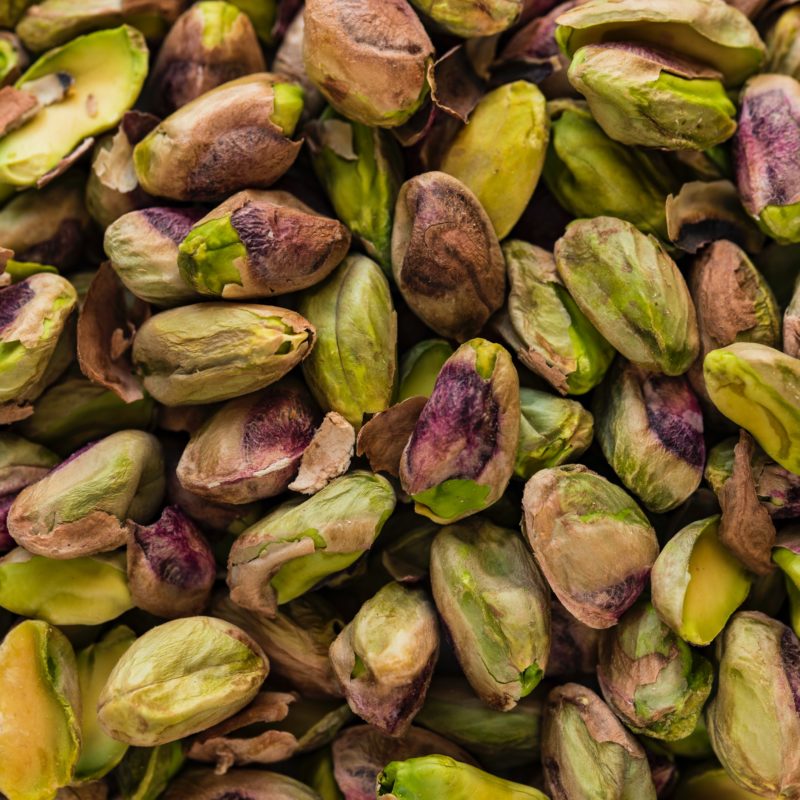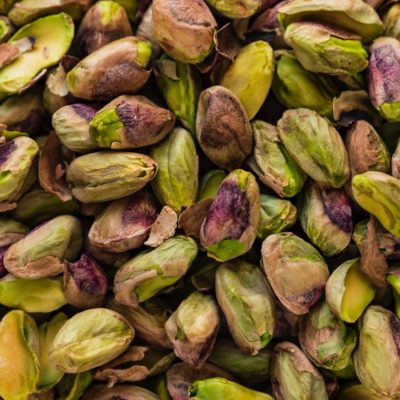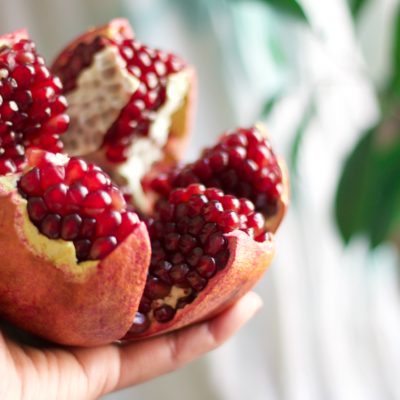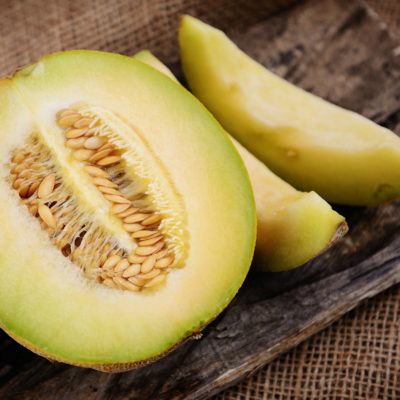About Pistachios
The pistachio tree (Pistacia vera) is a desert tree that originates from Central Asia and the Middle East. It produces a fruit, the nut of which was a common food in those regions as early as 6500 B.C. The biggest producer of pistachios is Iran, and pistachios are now also cultivated around the Mediterranean Sea, in the Southwestern U.S (mainly California, Arizona and New Mexico) and in Australia.
The fruit is composed of the edible pistachio nut which is surrounded by several soft and hard layers: immediately around the nut is a thin, papery skin. Nut and skin are encased in a hard, woody shell. Around the shell is a pink green, soft leathery husk. About two or three weeks before the pistachio nut becomes ripe, the shell starts to split open inside the husks. With Turkish pistachios, which are smaller than California pistachios, the husk is kept on until they are ready to be processed. But in California, the husk is usually removed immediately to prevent it from staining the shell.
Pistachios are a good source of protein and are high in potassium, magnesium and vitamin B6. When unsalted, they are low in sodium.
Fresh, raw pistachios are delicious, but they are difficult to find because they don’t last very long in their raw state. They are therefore dried and roasted after harvesting and before shipping.
Farmer Frank grows pistachio trees on his farm in Duncan and on good years we get pistachios in our shares. These are fresh, unprocessed pistachios, which are a rarity and a delicacy. But eating them can be labor intensive.
For Frank to process pistachios would require him to take them to a processing facility where the pistachios’ husks are removed. The issue Frank encouters is that the pistachios one brings to the processing facility are not the pistachios one gets out, as all pistachios brought in by different growers are processed in bulk. Since Frank grows his pistachios organically, he doesn’t want them to be mixed up with others.
So, what can you do with fresh pistachios? The best thing is to eat them raw. The trick is to remove the outer, leathery husk. If the pistachio husks are still soft when you get them, remove the husks one at a time by puncturing each pistachio with your fingernail and then peeling away the husk.
If the husks have already hardened, it might be easier to remove them after drying or roasting the pistachios. Once dried or roasted, grab a handfull of pistachios and rub them between the palms of your hands. Many husks will just crumble away. The reluctant ones may require more individual peeling with your nails.
Directions
To dry pistachios, spread them out on tray and leave them out in full sun for a couple of days, covered by a cheese cloth or screen to keep away insects.
Roasting pistachios:
In a saucepan, add 1 teaspoon of salt to 1/4 cup of water and heat until the water comes to a boil.
Add 2 cups of pistachios, bring back to a boil, reduce heat to a slow boila, and stir until all the water has evaporated.
Preheat the oven to 300 degrees.
Place the salted pistachios onto a cookie sheet in a single layer and roast in the oven for 10 to 15 minutes. Shake the tray once a twice to ensure even roasting.



